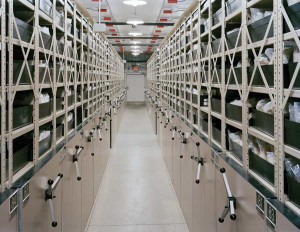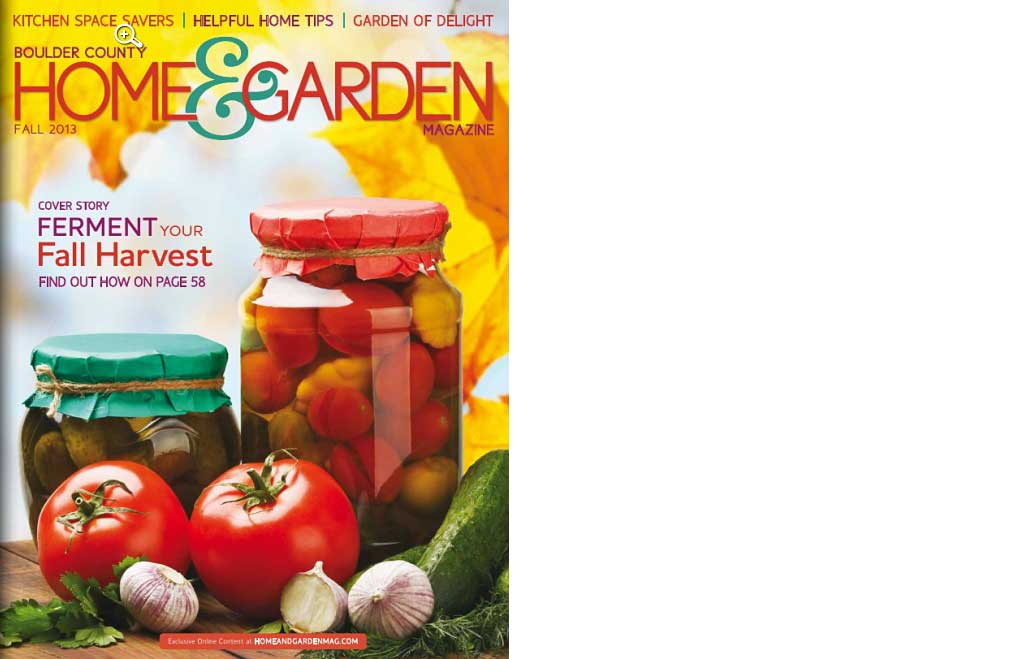Deep-Seeded Beliefs
12 Jan 2015
Instead of books, Ross Rodgers’ library contains seeds from a 1,000 different vegetables, flowers and herbs.
By John Lehndorff Look into Ross Rodgers’ home “library” and you’ll see both the past and future of our food supply, but not a single book.
“I have two closets in my house. One is the drying area for this year’s seeds. That’s where I clean and sort them. The other closet is a seed bank that has seeds that are anywhere from one to 20 years old,” he says.
Rodgers estimates he has seeds from several hundred different vegetables, herbs and flowers. “There are at least a thousand different varieties overall,” he says, which include crookneck seeds he got from an elderly Hopi farmer in Arizona.
His Boulder closets comprise the “Living Seed Library” that Rodgers maintains. He saves and swaps seeds, promotes distributing seeds from native plants, and talks about issues like the use of genetically engineered (GMO) seeds.
A lifelong gardener who studied agricultural ecology, Rodgers found his calling while working with a veteran plant breeder. “The biggest thing I learned was how easy it is to save seeds; most plants are born to create seeds,” he says.
At seed libraries, as the name suggests, seeds are constantly withdrawn and deposited by members. Seed banks (including nuclear-bombproof Millennium Seed Bank at Kew Royal Botanic Gardens in England) take in seeds to preserve cultural heritage and biodiversity. The seeds are saved to cope with future agricultural challenges brought on by war, overpopulation and climate change.
Look into Ross Rodgers’ home “library” and you’ll see both the past and future of our food supply, but not a single book.
“I have two closets in my house. One is the drying area for this year’s seeds. That’s where I clean and sort them. The other closet is a seed bank that has seeds that are anywhere from one to 20 years old,” he says.
Rodgers estimates he has seeds from several hundred different vegetables, herbs and flowers. “There are at least a thousand different varieties overall,” he says, which include crookneck seeds he got from an elderly Hopi farmer in Arizona.
His Boulder closets comprise the “Living Seed Library” that Rodgers maintains. He saves and swaps seeds, promotes distributing seeds from native plants, and talks about issues like the use of genetically engineered (GMO) seeds.
A lifelong gardener who studied agricultural ecology, Rodgers found his calling while working with a veteran plant breeder. “The biggest thing I learned was how easy it is to save seeds; most plants are born to create seeds,” he says.
At seed libraries, as the name suggests, seeds are constantly withdrawn and deposited by members. Seed banks (including nuclear-bombproof Millennium Seed Bank at Kew Royal Botanic Gardens in England) take in seeds to preserve cultural heritage and biodiversity. The seeds are saved to cope with future agricultural challenges brought on by war, overpopulation and climate change.
 The seeds filling Rodgers’ Living Seed Library are not just any variety, however. Many plants that home gardeners grow are hybrids bred for specific attributes. “Seeds saved from common hybrid plants won’t grow into the same plant as the original,” Rodgers says. That’s why seed banks only save seeds from heirloom and native plants that are “open pollinated” naturally by birds, wind or insects.
Rodgers is happy to share his bounty, but the seeds come with a request: “I connect people with resources and ask them to collect and save seeds.” For beginners, he recommends taking a gardening class or finding a green-thumb neighbor who knows what grows best in the area. Attending local seed swaps is also invaluable.
“When you get together to share seeds, person to person, you get more than the seeds themselves,” he says. “You get to hear the story of the seeds, where they came from, and how well they grow with the right soil and the right amount of sun, and what challenges came up during the growing season.” Attending seed swaps also guarantees you’ll find out which chemicals have (or haven’t) been used in the growing process.
The seeds filling Rodgers’ Living Seed Library are not just any variety, however. Many plants that home gardeners grow are hybrids bred for specific attributes. “Seeds saved from common hybrid plants won’t grow into the same plant as the original,” Rodgers says. That’s why seed banks only save seeds from heirloom and native plants that are “open pollinated” naturally by birds, wind or insects.
Rodgers is happy to share his bounty, but the seeds come with a request: “I connect people with resources and ask them to collect and save seeds.” For beginners, he recommends taking a gardening class or finding a green-thumb neighbor who knows what grows best in the area. Attending local seed swaps is also invaluable.
“When you get together to share seeds, person to person, you get more than the seeds themselves,” he says. “You get to hear the story of the seeds, where they came from, and how well they grow with the right soil and the right amount of sun, and what challenges came up during the growing season.” Attending seed swaps also guarantees you’ll find out which chemicals have (or haven’t) been used in the growing process.
Baby Steps
Rodgers recommends beginning seed savers start with easy-to-grow crops such as greens like lettuce and arugula, vegetables like beans and tomatoes, and many herbs, including lemon balm.
- The cryopreservation vault at the National Center for Genetic Resources in Fort Collins not only preserves seeds, it also stores microbes like bacteria, fungi, yeast and viruses that are crucial to agriculture.
Seed Saving 101
The best place to learn about seed saving is at a local seed swap, but here are basic guidelines for saving seeds from your harvest.
- Choose seeds from open-pollinated plants, heirloom and native varieties so they will germinate properly the following year.
- “Dry seeds”—lettuce, broccoli, cabbage, onions, beets, carrots, celery and many herbs—will dry on the plant before being harvested.
- “Wet seeds” are from garden fruits like melons, peppers and squash. Simply remove the seed from the fruit, wash it clean, and then dry it quickly and completely.
- To dry seeds spread them on a sheet of newspaper or a screen and let them air dry for a month. (Saving seeds from tomatoes, some melons and cucumbers is more complicated. An extra step called “fermentation” is required to remove the slick natural protective coating from the seeds.)
- When seeds are totally dry, seal them in small paper envelopes inside labeled waterproof food-storage bags, plastic canisters, or glass jars with tight-fitting lids. Store the seeds in a dry, dark, cool place like a closet or cabinet.
- Don’t save everything. Only save seeds from the strongest, best-tasting plants.
Seed-Saving Resources
John Lehndorff is the former food editor and features editor of the Daily Camera. He hosts Radio Nibbles on KGNU (88.5-FM) on Thursdays at 8:25 a.m. He saved coriander seeds from his cilantro this fall. He may replant them in his garden, unless he toasts them to add to a curry.













